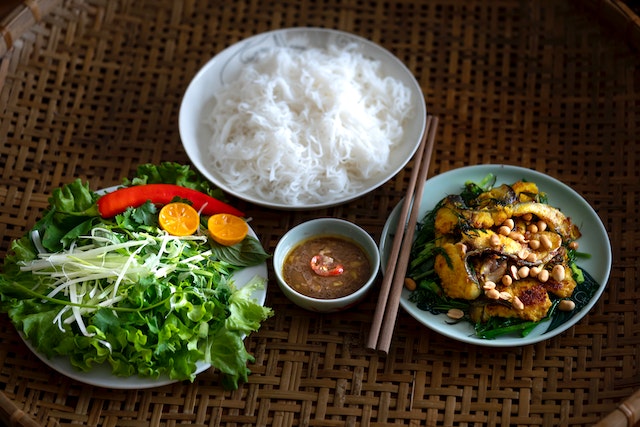Rice noodles are ubiquitous in Southeast Asian cooking, and for good reason: their adaptability and distinctive texture make them a fan favourite around the world. The fine strands of rice flour can be found in anything from hearty soups to light stir-fries and even salads. This blog will cover every aspect of rice noodles, from their cultural significance and history to the various forms and most common recipes made with them.
History of Rice Noodles
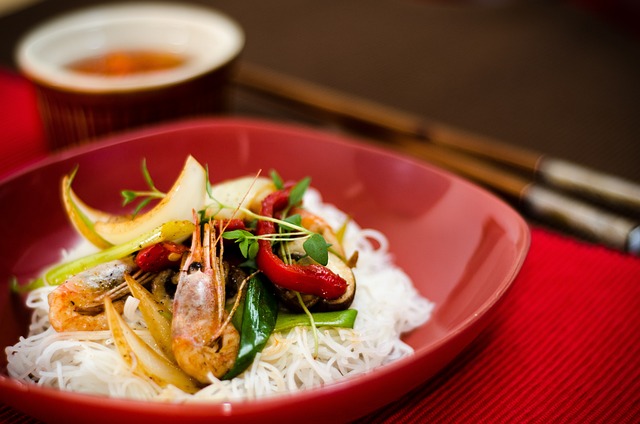
For millennia, rice noodles have been a mainstay in Southeast Asian cuisine. It is not known for certain where rice noodles originally appeared in the world, although most historians agree that it was in China more than two millennia ago. Noodles made from rice quickly gained popularity in Vietnam, Thailand, and Cambodia, where they were modified to better suit local palates and cooking methods.
How are Rice Noodles Made?
Noodles are formed by kneading a dough of rice flour and water. After the dough is kneaded, it is flattened out into sheets and then cut into strands. After this, the noodles are either dried or cooked right away. The method used to make rice noodles might change from one kind to another and even from one region to another. Rice noodles, for instance, are normally created by machine in Thailand and dried in a hot drier, whereas in Vietnam they are typically prepared by hand and dried in the sun.
Different Types of Rice Noodles
#1. Vermicelli
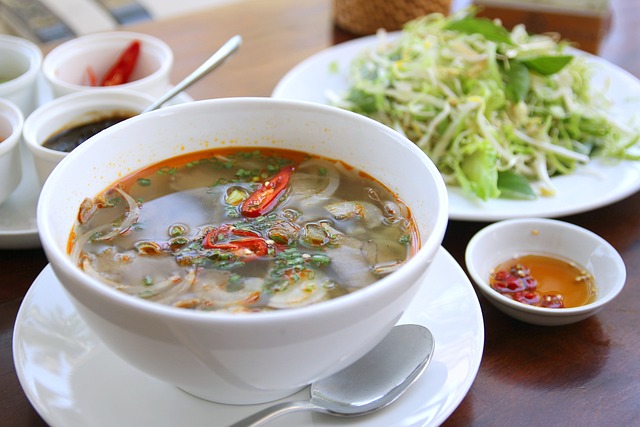
Thin and translucent, vermicelli is manufactured from rice flour and water. Other names for vermicelli are rice sticks and rice vermicelli. They are used in many traditional Vietnamese cuisines, including bun cha and pho. Cooking vermicelli noodles entails the standard method of submerging them in boiling water for a few minutes, at which point they soften and become malleable. After that, you may throw them into soups, salads, and stir-fries. Vermicelli noodles are light and airy, and they take on the flavor of whatever they’re cooked with.
#2.Flat Rice Noodles
Flat rice noodles, often called rice sheets or rice cakes, are a bigger and wider variety of noodle than their thinner cousin, vermicelli. Pad Thai and char kway teow, for example, frequently feature them as an ingredient. To prepare thin rice noodles, one method is to soak them in boiling water for a few minutes, after which they can be cooked in a variety of ways. They are perfect for adding to a stir-fry with meat, vegetables, and other fixings. Soups like pho and laksa make use of flat rice noodles as well.
#3.Rice Noodle Rolls
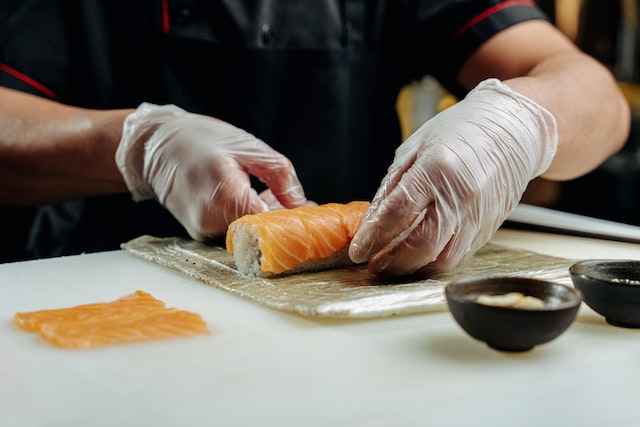
Cheong fun, or rice noodle rolls, are a type of rolled noodle snack that is prepared by rolling rice flour in water. To make the batter more malleable, it is put onto a cloth and heated. The sheet of rice noodles is spread with fillings like pork, shrimp, or veggies, and then folded up like sushi. Dim sum menus frequently feature rice noodle rolls accompanied by soy sauce or hoisin sauce. They are a common snack in Southeast Asia due to their soft, chewy texture.
#4. Rice Thread Noodles
Rice vermicelli, often called rice thread noodles, is a type of extremely fine and delicate noodle produced from rice flour and water. They are a staple ingredient in dishes like bun bo hue and other soups and salads. Traditional preparation for rice thread noodles entails a brief soak in boiling water to soften the noodles. They’ll be useful in many recipes, from salads to soups to stir-fries. Rice thread noodles are light and airy, and they take on the flavour of their surrounding components beautifully.
Nutritional Value of Rice Noodles
Noodles made with rice flour, which is gluten-free by nature, are a healthier option than those prepared from wheat flour. In addition to being a good source of carbs, they are low in fat and calories. One cup of cooked rice noodles contains:
- Calories: 192
- Carbohydrates: 44 grams
- Protein: 3 grams
- Fat: 0.5 grams
- Fibre: 1 gram
- Sodium: 6 milligrams
Popular Rice Noodle Dishes
#1. Pad Thai
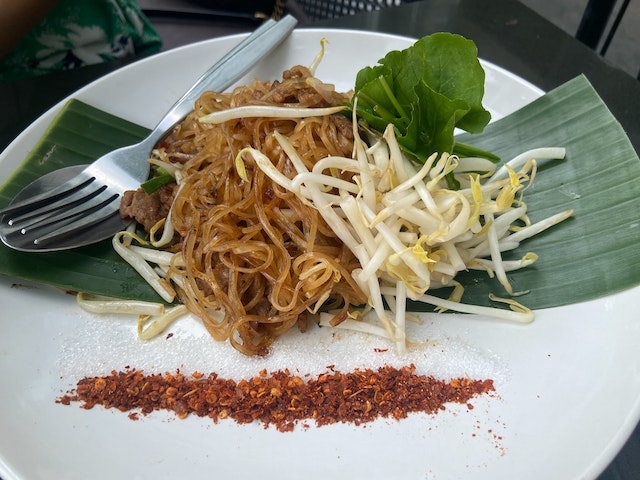
Rice noodles, eggs, tofu, prawns, and bean sprouts are stir-fried to create Pad Thai, a traditional Thai dish. The dish is traditionally flavoured with tamarind, fish sauce, and palm sugar and topped with peanuts, lime wedges, and cilantro. You can’t go wrong with a plate of Pad Thai for a healthy and hearty supper that can be prepared in minutes.
#2. Pho
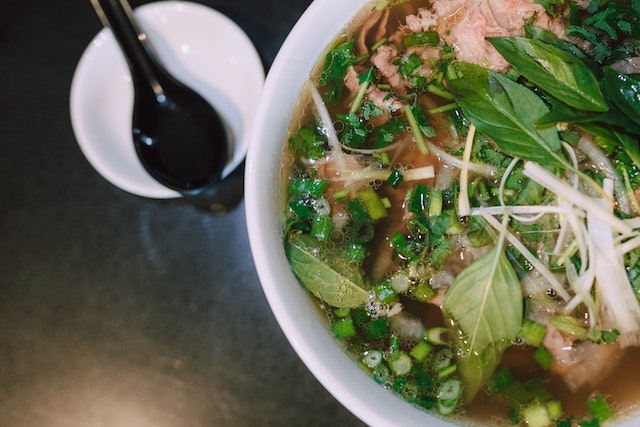
Noodle soup in the Vietnamese style, known as pho noodles, often features flat rice noodles, meat or chicken, herbs, and spices. Bean sprouts, lime wedges, and basil leaves are common accompaniments. Soup like pho is just what you need on a chilly winter day because it’s so tasty and warming.
#3. Bun
Vermicelli noodles, grilled meats, herbs, and vegetables are the foundation of the Vietnamese noodle salad known as bun. Common accompaniments include sweet and sour sauces. Bun is a great dish to have on a warm summer day because it is both light and refreshing.
#4. Khao Soi
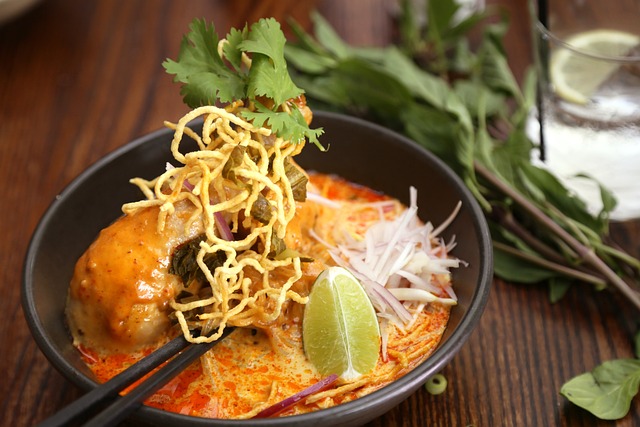
Chicken or beef, egg noodles, and coconut milk are the main ingredients of Khao Soi, a traditional Thai soup from the North. To serve, sprinkle with pickled mustard greens and top with crispy noodles. For a hearty meal on a chilly day, nothing beats a bowl of savoury Khao Soi.
#5. Char Kway Teow
The flat rice noodles in Char Kway Teow are stir-fried in a special sauce along with seafood, sausage, eggs, and bean sprouts to create a traditional Malaysian dish. Chilli paste is a common accompaniment. Char Kway Teow is a delicious and filling dish, ideal for a substantial supper.
Conclusion
Rice noodles come in a broad variety of shapes and sizes, from the thin strands of vermicelli to the huge flat noodles found in Pad Thai and Char Kway Teow. Rice noodles are the perfect complement to a warm bowl of Pho or a bowl of spicy Laksa. In other words, let your imagination go wild in the kitchen and appreciate the many uses for this adaptable ingredient.

